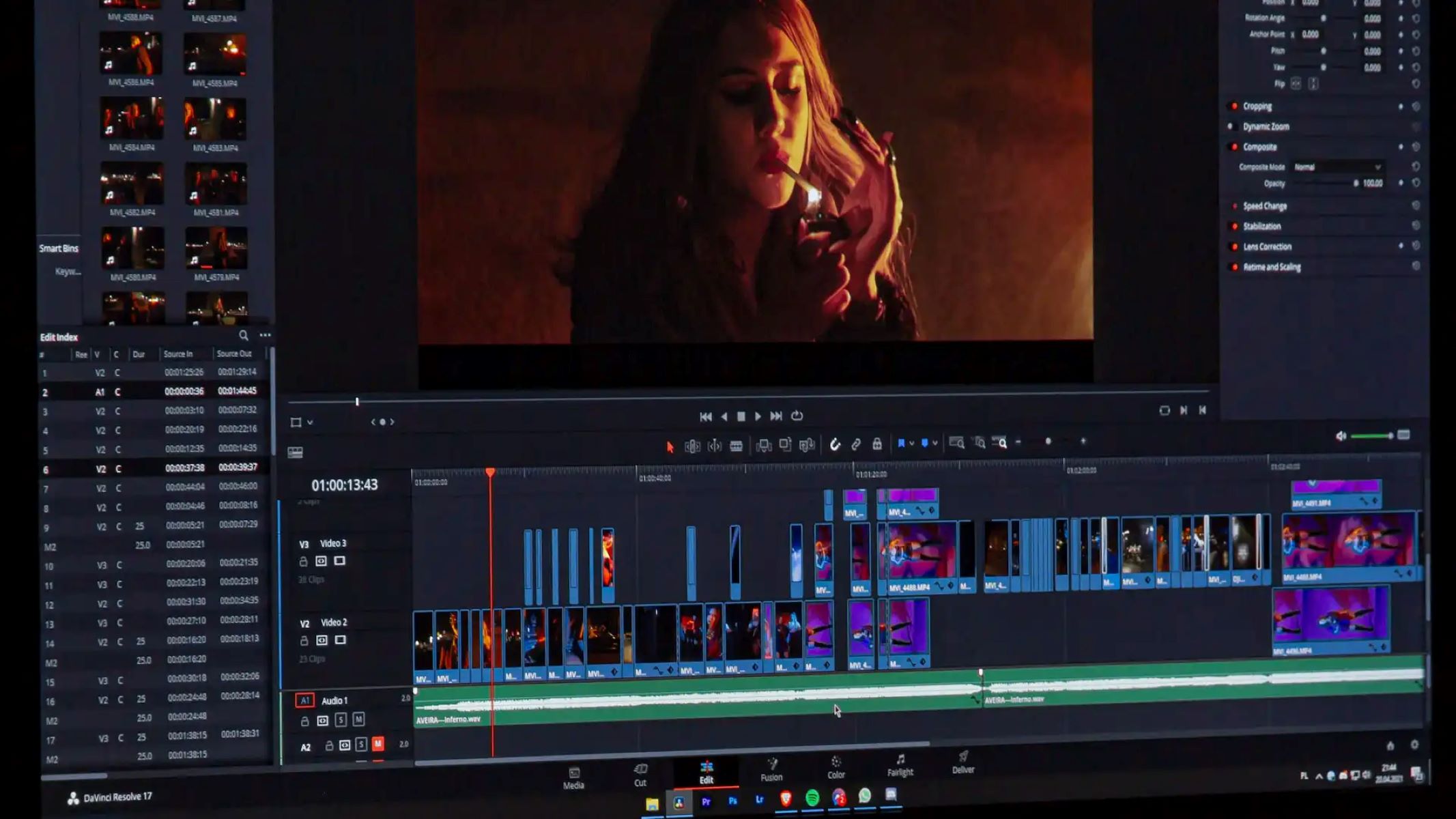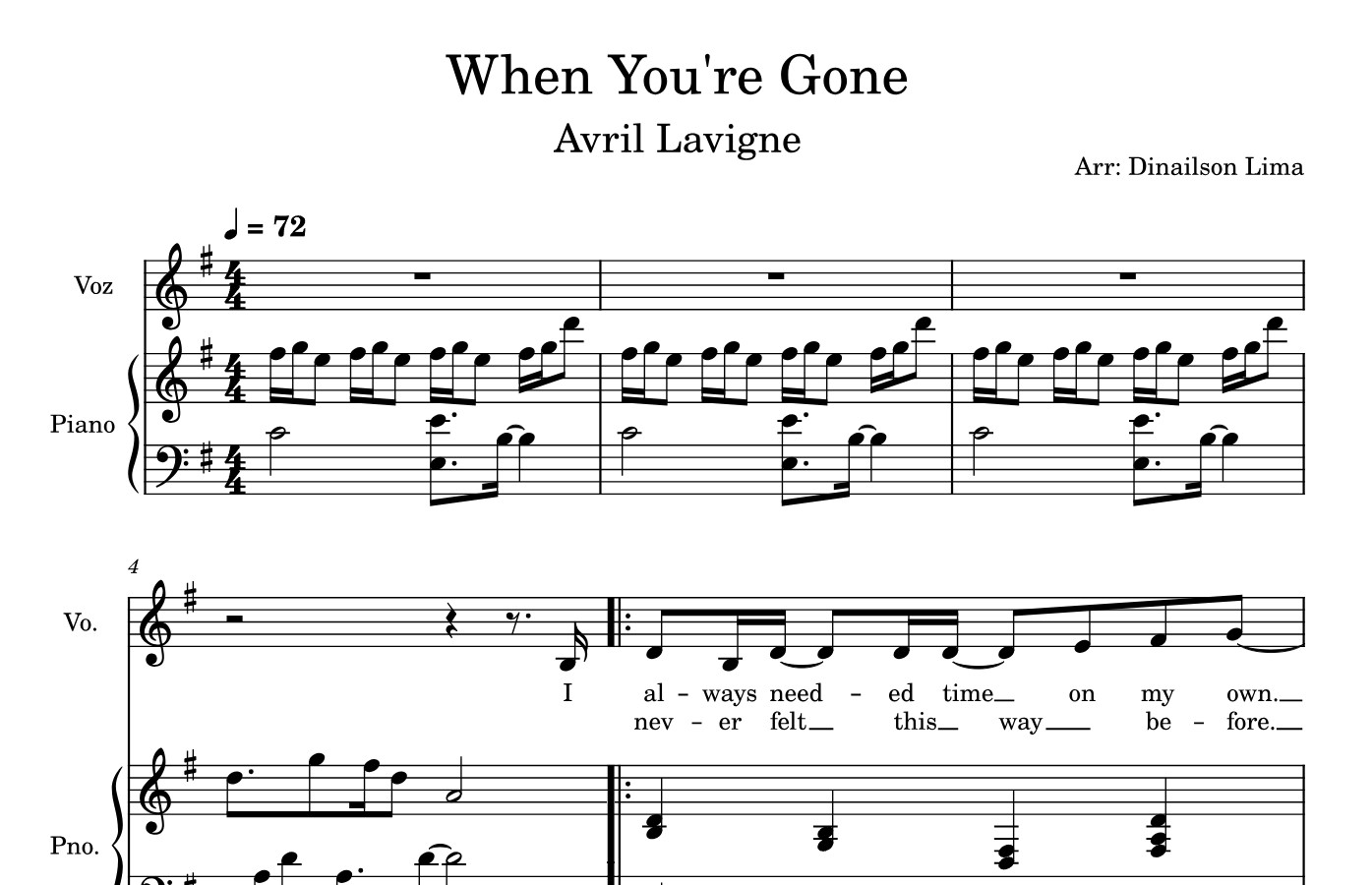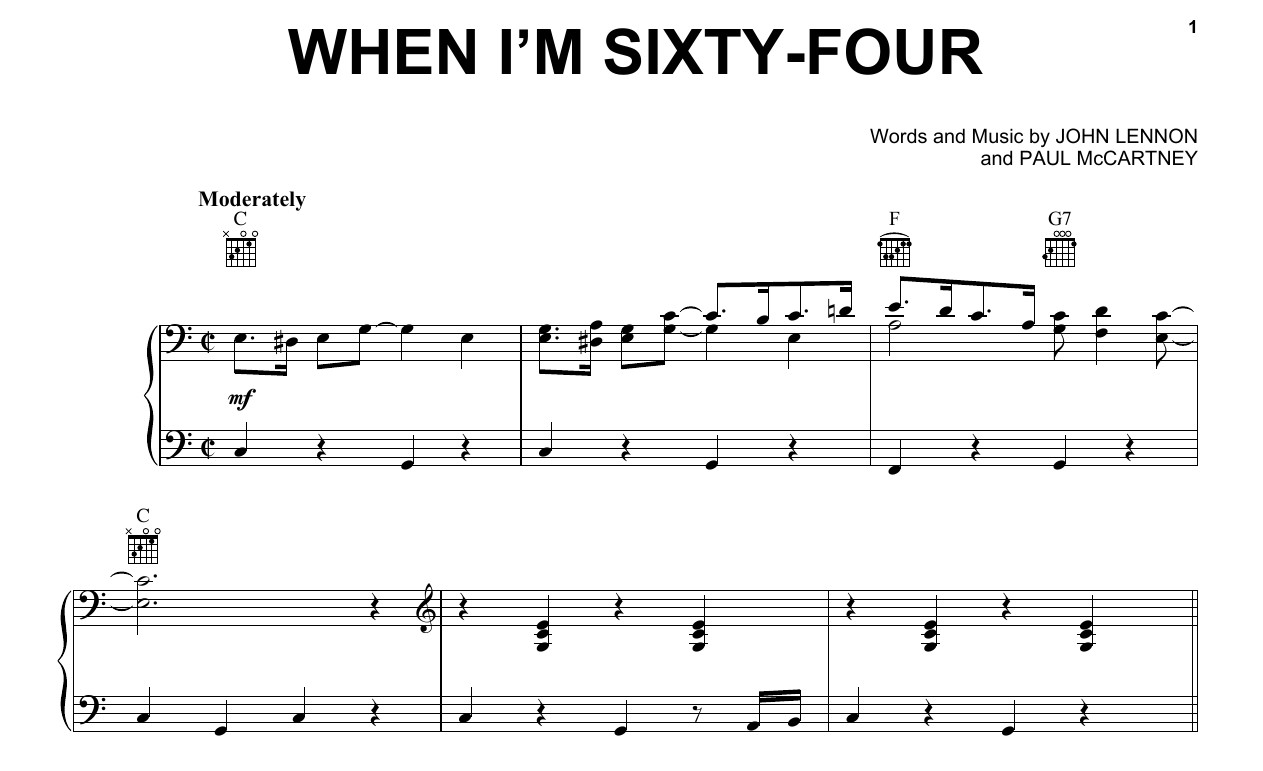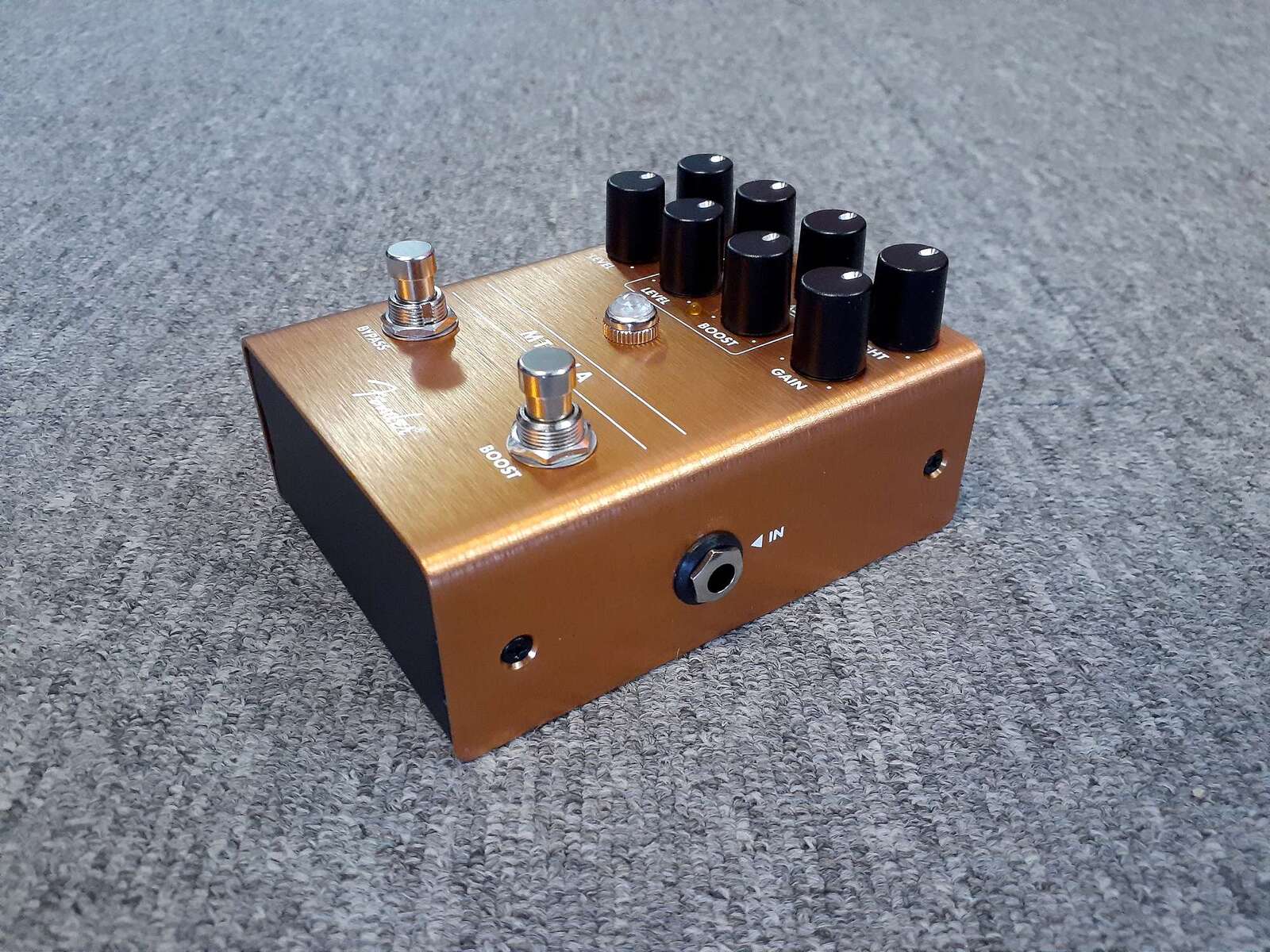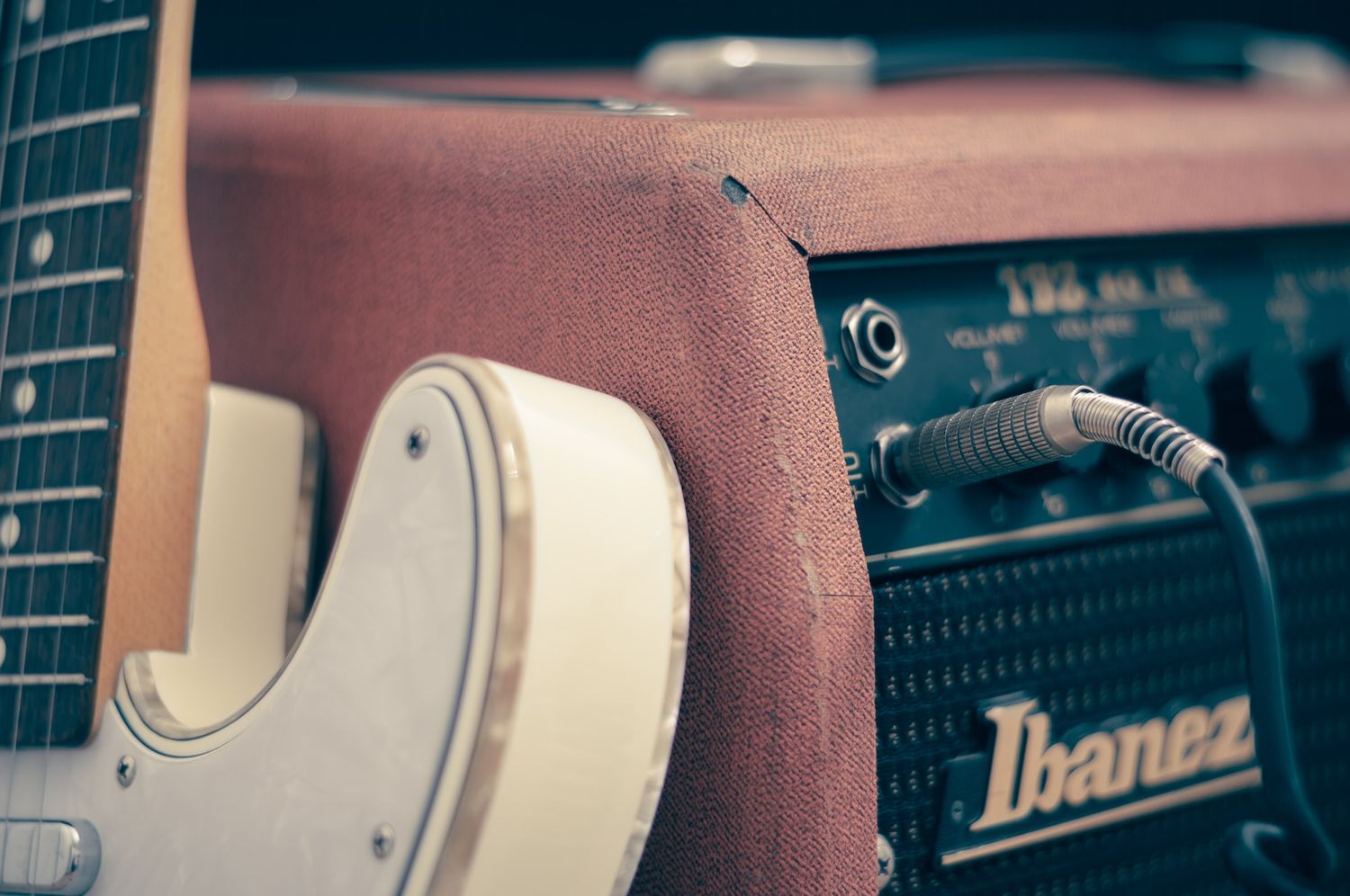Home>Production & Technology>Sheet Music>When To Use Sustain Pedal Sheet Music


Sheet Music
When To Use Sustain Pedal Sheet Music
Modified: February 11, 2024
Discover when to use the sustain pedal in sheet music, a vital technique for creating beautiful, sustained notes. Enhance your musical performances with the right application of the sustain pedal.
(Many of the links in this article redirect to a specific reviewed product. Your purchase of these products through affiliate links helps to generate commission for AudioLover.com, at no extra cost. Learn more)
Table of Contents
- Introduction
- What is a Sustain Pedal?
- How does the Sustain Pedal Work?
- The Role of the Sustain Pedal in Sheet Music
- When to Use the Sustain Pedal in Sheet Music
- Examples of Sheet Music Where the Sustain Pedal is Used
- Common Mistakes When Using the Sustain Pedal in Sheet Music
- Tips for Using the Sustain Pedal Effectively in Sheet Music
- Conclusion
Introduction
Sheet music is a universal language that allows musicians to communicate their musical ideas and compositions. It provides a precise notation of musical elements such as rhythm, melody, and harmony. As musicians, we are constantly seeking ways to express ourselves and add depth to our performances. One essential tool that can enhance the expressive qualities of a musical piece is the sustain pedal.
The sustain pedal, also known as the damper pedal, is a vital component of many musical instruments, including pianos, keyboards, and synthesizers. It has the ability to sustain or prolong the sound of played notes, creating a rich and resonant sound. Understanding how and when to use the sustain pedal in sheet music is crucial for musicians to bring out the intended emotions and nuances of a composition.
In this article, we will explore the role of the sustain pedal in sheet music, discuss when to use it, and offer tips for using it effectively. Whether you’re a beginner or an experienced musician, understanding the nuances of the sustain pedal can greatly enhance your musical performances and interpretation of sheet music. So, let’s dive in and explore the fascinating world of the sustain pedal in sheet music.
What is a Sustain Pedal?
A sustain pedal is a foot-operated device that is commonly used by pianists and keyboard players to extend the duration and resonance of played notes. It is typically connected to the instrument via a cable or wirelessly, and pressing down on the pedal allows the strings or sound generators to continue vibrating even after the keys have been released.
When the sustain pedal is engaged, it lifts the dampers off the strings or sound sources, allowing the sound to sustain and resonate freely. This creates a richer and more harmonious sound, as the vibrations of the played notes blend together and linger in the air. In essence, the sustain pedal is like an “acoustic glue” that holds the musical soundscapes together and adds a sense of depth and continuity to the music.
The design and functionality of sustain pedals may vary depending on the instrument. In acoustic pianos, the sustain pedal is positioned on the right side of the piano, and it is operated by the right foot. Pressing the pedal down raises the dampers, and releasing it brings the dampers back onto the strings, stopping the sound. On digital keyboards and synthesizers, the sustain pedal may be a separate accessory that can be connected to the instrument’s pedal input.
It is important to note that not all musical instruments have a sustain pedal. While it is most commonly associated with pianos and keyboards, other instruments like organs and some electronic instruments may have similar mechanisms to sustain or extend the sound. However, for the purposes of this article, we will primarily focus on the use of the sustain pedal in the context of sheet music for pianos and keyboards.
How does the Sustain Pedal Work?
The sustain pedal operates using a simple mechanism that allows it to control the dampers inside the instrument. When you press the sustain pedal down with your foot, it lifts all the dampers off the strings or sound sources. This means that even if you release the keys you’ve played, the strings or sound sources will continue to vibrate and produce sound.
Inside an acoustic piano, the dampers are small pieces of felt that rest on the strings. When the sustain pedal is not pressed, the dampers are in contact with the strings, preventing them from vibrating and stopping the sound. However, when you press the sustain pedal down, the dampers are lifted, allowing the strings to vibrate freely. This creates a sustained and resonant sound that adds depth and richness to the music.
On digital keyboards and synthesizers, the operation of the sustain pedal is similar, although the mechanism may vary. When the sustain pedal is engaged, it sends a signal to the instrument to sustain the played notes. The instrument’s sound engine then continues to produce sound for the duration specified by the sustain pedal, even if the keys are released.
It’s worth noting that the sustain pedal can also be used partially, meaning that you can press it down only halfway or release it gradually to create different degrees of sustain. This technique is particularly useful when you want to create a subtle or gradual change in the sound rather than an abrupt cut-off. The partial use of the sustain pedal allows for more dynamic control and expression in your musical performance.
Understanding how the sustain pedal works is crucial for using it effectively in sheet music. By knowing when and how to engage the pedal, you can bring out the desired musical effects and enhance the overall sound and expression of your performance. In the next sections, we will explore the role of the sustain pedal in sheet music and discuss when and how to use it to maximize its impact.
The Role of the Sustain Pedal in Sheet Music
The sustain pedal plays a vital role in sheet music, allowing musicians to shape and enhance the music they play. It can bring out the nuances of a piece, create a sense of continuity between chords, and add depth and resonance to the overall sound. Understanding the role of the sustain pedal in sheet music is essential for musicians to accurately interpret and convey the intended emotions and musical ideas.
One of the primary roles of the sustain pedal is to sustain or prolong notes and chords. This is especially useful when dealing with long, sustained chords or melodies. By engaging the sustain pedal, the sound continues to resonate, creating a seamless connection between notes and chords and giving them a fuller and more expressive sound.
Additionally, the sustain pedal is often used to create a legato effect. Legato refers to smoothly connecting notes together without any breaks or interruptions. By using the sustain pedal, musicians can achieve a seamless and connected sound by overlapping the resonance of one note or chord with the beginning of the next. This technique is particularly effective in creating a smooth and flowing sound in melodic passages or when playing arpeggios.
The sustain pedal also helps to create a sense of sustain and ambience in the music. By sustaining the sound of certain chords or notes, the sustain pedal allows the sound to linger in the air, adding a lush and atmospheric quality to the music. This can be particularly effective in creating a sense of space and emotion in slower, introspective pieces or in building tension and excitement in more dramatic or passionate compositions.
In addition to its role in sustaining and connecting notes, the sustain pedal can also be used to create various expressive techniques. For example, by using quick and precise pedal movements, musicians can create staccato or detached effects that add a sense of articulation and clarity to the music. On the other hand, by using gradual and smooth pedal movements, musicians can achieve a more legato and blended sound, enhancing the overall musical expression.
Understanding how the sustain pedal influences the sound and expression of the music is crucial when interpreting sheet music. By knowing when to engage, release, or partially use the sustain pedal, musicians can bring out the intended emotions, dynamics, and phrasing of a composition. In the following sections, we will explore when to use the sustain pedal in sheet music and provide examples to illustrate its use in various musical contexts.
When to Use the Sustain Pedal in Sheet Music
Knowing when to use the sustain pedal in sheet music is essential for creating the desired musical effects and accurately interpreting the composer’s intentions. While there are no hard and fast rules, there are certain guidelines and musical elements to consider when deciding when to engage or release the sustain pedal.
One important factor to consider is the harmonic structure of the music. In general, the sustain pedal is commonly used when playing chords or harmonies that are held for a longer duration. By engaging the pedal, the sound of the chords can be sustained and blended together, creating a rich and resonant sound. This is particularly effective in slow and sustained passages where the intention is to create a lush and atmospheric quality.
On the other hand, when playing fast and intricate passages or when the music requires precise articulation, it is generally best to release the sustain pedal. This allows for clearer and more defined notes, preventing them from blending together and becoming muddy or indistinct. By utilizing the sustain pedal selectively, musicians can achieve greater clarity and precision in their playing.
Another factor to consider is the style and genre of the music. Different musical genres may call for different pedal techniques and usage. For example, in classical music, the sustain pedal is often used more sparingly and delicately, with a lighter touch to maintain clarity and precision in intricate passages. In contrast, in certain styles of jazz or contemporary music, a more liberal use of the sustain pedal may be desired to create a lush and harmonically rich sound.
The use of the sustain pedal also depends on the desired expression and emotional quality of the music. In more melancholic or introspective pieces, the pedal can be used to prolong notes and create a sense of longing or sadness. Alternatively, in joyful and exuberant pieces, the pedal can be employed to create a sense of grandeur and fullness in the sound. It’s important to experiment and find the balance that best suits the mood and style of the music being performed.
Ultimately, the decision of when to use the sustain pedal comes down to a combination of musical context, personal interpretation, and artistic intention. It requires a sensitive listening ear and an understanding of the musical elements at play. By experimenting with different pedal techniques and actively listening to the sound produced, musicians can make informed decisions that enhance the beauty and expression of the music.
In the following sections, we will explore examples of sheet music where the sustain pedal is commonly used, providing further insight into its application and musical impact.
Examples of Sheet Music Where the Sustain Pedal is Used
The sustain pedal is a versatile tool that can be utilized in various musical genres and styles. It adds depth, resonance, and expressive qualities to the music. Let’s explore a few examples of sheet music where the sustain pedal is commonly used to illustrate its application and impact.
1. Clair de Lune by Claude Debussy: In this iconic piece, the sustain pedal is used extensively to create a dreamy and ethereal atmosphere. The pedal helps to sustain the arpeggios and delicate melodies, allowing them to blend together and create a fluid, impressionistic sound.
2. Für Elise by Ludwig van Beethoven: The sustain pedal is used selectively in this famous piano composition. It is engaged during the held chords, adding sustain and resonance, while released during the staccato passages for clarity and articulation.
3. Unchained Melody by The Righteous Brothers: In this romantic ballad, the sustain pedal is used to enhance the emotional depth of the melody. By sustaining the rich harmonies and allowing them to ring out, the pedal adds a sense of longing and intensity to the song.
4. Bohemian Rhapsody by Queen: In this epic rock ballad, the sustain pedal is employed in the piano sections to create a dense and atmospheric sound. It helps to blend the different layers of the piano accompaniment and gives the music a grand and majestic quality.
5. Prelude in C Major by Johann Sebastian Bach: The sustain pedal is used sparingly in this classical piece. It is engaged to sustain the final chord at the end of each phrase, giving it a sense of resolution and allowing the sound to resonate.
These are just a few examples of how the sustain pedal can be used to enhance various musical compositions. When studying sheet music, pay attention to the pedal markings indicated by the composer. Experiment with different pedal techniques to find the right balance and expression for each piece.
It’s important to note that while these examples highlight popular pieces where the sustain pedal is commonly used, the usage of the pedal may vary depending on the interpretation of the performer and the specific musical context. Ultimately, it is up to the musician’s artistic judgment and musical sensibilities to decide how and when to use the sustain pedal in their performances.
Common Mistakes When Using the Sustain Pedal in Sheet Music
While the sustain pedal can greatly enhance the sound and expression of music, it is important to use it judiciously and with precision. Here are some common mistakes that musicians make when using the sustain pedal in sheet music:
1. Overpedaling: One common mistake is excessive or continuous use of the sustain pedal throughout a piece. This can result in a muddy or blurred sound, as the notes and harmonies blend together too much. It is crucial to engage and release the pedal at the appropriate times to maintain clarity in the music.
2. Lack of Syncopation: Another mistake is not syncing the pedal with the rhythm of the piece. When playing fast or syncopated passages, it is important to release the pedal in time with the changing harmonies and rhythms. Failure to do so can create a jumbled or chaotic sound.
3. Incorrect Release: Releasing the sustain pedal abruptly can also cause problems. The pedal should be released gradually and precisely to avoid a sudden cutoff in sound. A gradual release allows the instrument’s natural decay to blend with the music and create a smoother, more natural transition.
4. Ignoring Pedal Markings: Many sheet music scores come with specific pedal markings from the composer. Ignoring or disregarding these markings can lead to unintended harmonic clashes or sonic imbalances. Pay close attention to the indicated pedal markings and follow them as closely as possible.
5. Forgetting Half-pedaling Techniques: Half-pedaling refers to using the sustain pedal partially or pressing and releasing it to achieve different degrees of sustain. Neglecting this technique can result in a lack of dynamic control and a limited tonal range. Practice and experiment with half-pedaling techniques to achieve a more nuanced and expressive sound.
6. Improper Pedal Technique: Using the pedal with improper technique can also hinder the desired musical effects. Avoid stomping or pressing the pedal too aggressively, as it can create an abrupt and overpowering sound. Instead, use a controlled and gentle touch when engaging and releasing the pedal.
Awareness of these common mistakes can help musicians improve their pedal technique and enhance their performances. Be mindful of the specific musical context, dynamics, and phrasing when deciding how and when to use the sustain pedal. A thoughtful and strategic approach to pedal usage will result in a more nuanced and expressive interpretation of the music.
Tips for Using the Sustain Pedal Effectively in Sheet Music
When used correctly, the sustain pedal can elevate your piano playing and add depth and expression to your music. Here are some tips to help you use the sustain pedal effectively in your sheet music interpretation:
1. Listen attentively: Pay close attention to the sound produced when you engage and release the sustain pedal. Listen for the blending of notes, the length of resonance, and the overall balance of the sound. Developing a keen ear will help you make more informed decisions about when to use the pedal.
2. Follow the score markings: Composer’s markings for pedal usage are important guideposts. Take note of any specific pedal indications, such as “ped,” “sost. ped,” or “release.” These markings can provide valuable insights into the composer’s intentions and the desired pedal effects for the music.
3. Use partial pedaling: Experiment with partial pedaling techniques, such as half-pedaling or selective engagement of the pedal, to achieve different degrees of sustain and resonance. Partial pedaling can bring out subtleties in the music and allow for more dynamic control over the sound.
4. Avoid excessive pedal usage: Be mindful not to continuously hold down the pedal throughout a piece. Use the pedal judiciously to maintain clarity, especially in faster passages or sections with intricate harmonies. Engage and release the pedal at appropriate moments to create a cleaner and more articulated sound.
5. Sync the pedal with the music: Pay attention to the rhythm and phrasing of the music when using the pedal. Sync the engagement and release of the pedal with the desired musical accents, cadences, and chord changes. This will enhance the overall musicality and help you express the intended emotions in the sheet music.
6. Practice pedal technique: Spend dedicated practice time specifically for pedal technique. This can involve exercises and studies that focus on pedaling coordination, control, and precision. By mastering pedal technique, you can effectively use the sustain pedal as a tool for musical expression.
7. Experiment and adapt: Every piece of music and every piano player’s interpretation is unique. Don’t be afraid to experiment and adapt your pedal usage based on your artistic sensibilities and the specific musical nuances of the piece you’re playing. Trust your musical instincts and seek a balance between personal expression and remaining true to the composer’s intent.
8. Listen to other musicians: Take the time to listen to recordings of accomplished pianists and musicians to gain insights into their pedal technique. Observe how they engage and release the pedal, and how it enhances their interpretation of the music. This can serve as inspiration and guidance for your own performance.
By following these tips, you can develop a better understanding of the sustain pedal’s potential and use it effectively to enhance your sheet music performances. Remember that the sustain pedal is a tool to express emotions and shape the sound, so use it thoughtfully and purposefully to convey the intended musical message.
Conclusion
The sustain pedal is a powerful tool that can enhance the expressiveness and depth of your piano playing. By understanding its function and learning to use it effectively, you can bring out the intended emotions and nuances of a musical composition.
Throughout this article, we discussed the role of the sustain pedal in sheet music, how it works, and when to use it. We explored examples of sheet music where the sustain pedal is commonly employed, as well as common mistakes to avoid and tips for using the pedal effectively.
Remember, the sustain pedal should not be used indiscriminately or as a crutch to cover up subpar playing. Instead, it should be used thoughtfully and purposefully to enhance the musical expression and interpretation of a piece. By actively listening, following pedal markings, and practicing pedal technique, you can develop a keen sense of when and how to engage or release the pedal for maximum musical impact.
Ultimately, the sustain pedal is a tool that allows you to bring a new level of depth and resonance to your playing. Whether you’re performing classical compositions, jazz standards, or contemporary pieces, the use of the sustain pedal can greatly enrich your musical performances and captivate your listeners.
So, go ahead and experiment with the sustain pedal. Discover the nuances and subtleties it can add to your music. Embrace the challenge of mastering pedal technique and use it as a means to express your musical artistry. With practice, experience, and a keen ear, you’ll be able to unlock the full potential of the sustain pedal and create truly captivating performances.
Keep in mind that the sustain pedal is just one tool in your musical arsenal, so continue to explore other aspects of music theory, technique, and interpretation to further enhance your playing. Enjoy your musical journey and let the sustain pedal be a guiding force in bringing your performances to life.

